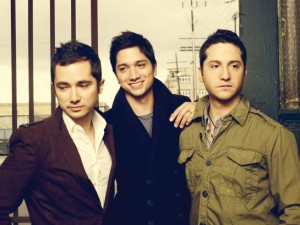Culture and assimilation are two topics that America has struggled with for a long time. Since its founding, the United States has been referred to as a “melting pot” for different cultures. People from different backgrounds, religions, regions and nationalities were supposed to be able to come to America and be accepted, regardless of their beliefs or individualities. However, the often less talked about issue is the individualities of the people born here. What do we share or differ in as Americans? What is the American culture or the American tradition? Do these things even exist?
Throughout our education, we students have learned about the peoples of the world. We have learned about the ancient civilizations such as the Greeks and the Romans. We have learned about Europe and the Renaissance. We have learned about Eastern Culture. From this instruction, most people are able to associate certain characteristics, traditions or beliefs with countries and peoples of the world. Most people know about their family’s traditions and heritage. You may celebrate holidays via conventional rituals. You may make meals based on the recipes of an old relative. Many Americans know at least something about their family and past culture. But can the same be said for American culture?
Does American culture exist? Are there any traditions that bind our “melting pot” together? I struggle to think of many. Thanksgiving and the Fourth of July could be considered unifying cultural events, but they are just events. Those two holidays unite the country for two days of the year. What about the other 363 days?
Another bonding factor could be American ideology. Life. Liberty. The Pursuit of Happiness. Freedom. Family. Courage. Prosperity. These words have long been associated with the American dream. But that is part of the problem. Despite their omnipresence throughout our nation’s history, none of these things are tangible. You cannot see, wear, or eat any of these things. What binds our country together then?
Following the Thanksgiving idea, some people might think back to the colonies as a traditional American idea. Images of black hats, silver shoe buckles, Native Americans and tobacco fields might fill one’s mind. But upon further investigation, this just can’t be a legitimate element either. This country was founded by a number of different groups with extremely different goals. Puritans, Quakers, and planters cannot be categorized as a united people at the time of colonization. Their goals, values and beliefs were too diverse to be thought of collectively today.
So where does this leave present-day America? Does this lack of tradition contribute to the problems we face with the assimilation of others today? Do we reject the culture of immigrants because we are subconsciously envious of their traditions? Do we want immigrants to give up their cultures and languages because ours don’t unite us Americans?
Multiculturalism is supposed to mean “the unique cultural heritage of racial and ethnic groups, some of whom seek to preserve their native languages and lifestyles,” (Owen 2). Unfortunately, this starkly contrasts with the idea of “assimilation” that so many people tend to focus on in today’s debate. The term melting pot is incredibly vague. Does it mean that America is a place where everyone becomes one or is America a place where everyone is free to express their own culture and speak their own language? Should these be the only options or is there a middle ground?
The issue of multiculturalism is a complicated one. Hopefully as the semester goes on, I will be able to focus on specific aspects of the debate but for now, I started big and realized how much there is to discuss on this issue.
This article proved to be very interesting and really got me thinking about the range of issues available for discussion.
http://www.civiced.org/pdfs/germanPaper0905/DianaOwen2005.pdf


